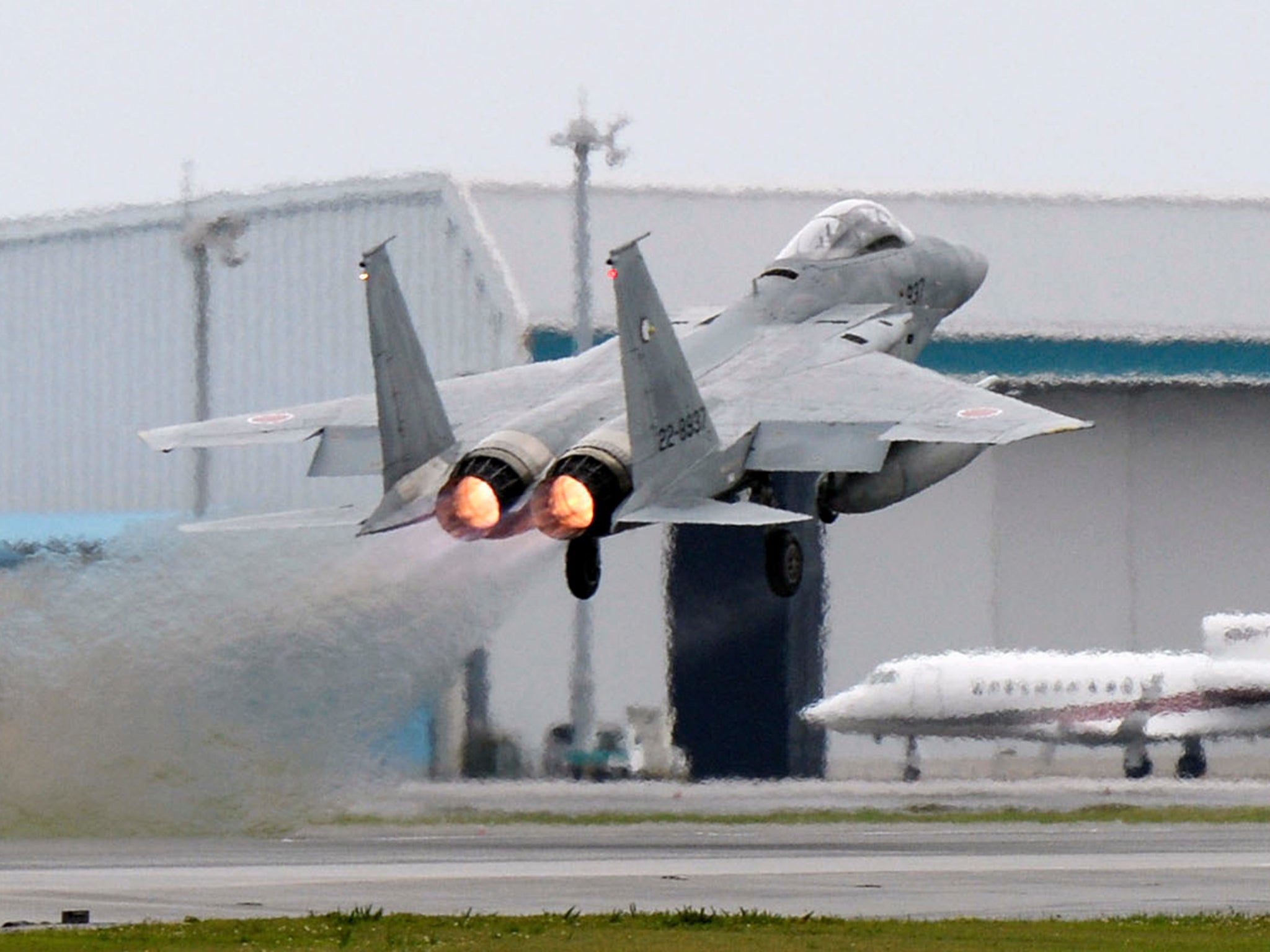Japan scrambles record number of fighter jets to intercept Chinese planes
The country fears the probing of its air defences is part of a push to extend military influence in the East China Sea

Your support helps us to tell the story
From reproductive rights to climate change to Big Tech, The Independent is on the ground when the story is developing. Whether it's investigating the financials of Elon Musk's pro-Trump PAC or producing our latest documentary, 'The A Word', which shines a light on the American women fighting for reproductive rights, we know how important it is to parse out the facts from the messaging.
At such a critical moment in US history, we need reporters on the ground. Your donation allows us to keep sending journalists to speak to both sides of the story.
The Independent is trusted by Americans across the entire political spectrum. And unlike many other quality news outlets, we choose not to lock Americans out of our reporting and analysis with paywalls. We believe quality journalism should be available to everyone, paid for by those who can afford it.
Your support makes all the difference.Japan's air force is scrambling fighter jets in record numbers as Chinese military activity escalates.
Interceptions of Chinese planes rose by half in the year to March 31, according to Japanese government figures, in response to increases in the communist country's activity in and around the East China Sea.
Japan worries China's probing of its air defences is part of a push to extend its military influence in the East China Sea and western Pacific, where Japan controls an island chain stretching 1,400 km (870 miles) south towards Taiwan.
“Recently we have seen Chinese military aircraft operating further south and that is bringing them closer to the main Okinawa island and other parts of the island chain,” Japan's top military commander, Admiral Katsutoshi Kawano, told a briefing in Tokyo.
Okinawa is home to the biggest concentration of US Marine Corp forces outside the United States, hosting the bulk of the roughly 50,000 US military personnel stationed in Japan.
Japan's Air Self Defence Force reported its fighters scrambled 1,168 times over the 12 months, up from 873 last year. A record 851 jets headed off approaching Chinese planes, or 280 more instances than in the corresponding period last year.
The new figure was also well above the previous high of 944 incidents in 1984, when Russian, rather than Chinese, aircraft triggered most of the scrambles. Encounters with Russian aircraft, which are often bombers flying from the north that skirt around Japan's airspace, rose 4.5 percent, to 301 scrambles.
The uptick in Chinese activity has contributed to rising tension in East Asia since the start of the year as North Korea pushes ahead with ballistic missile and nuclear bomb tests that have stoked fears in Japan, the United States and elsewhere.
Japan's navy plans joint drills around the East China Sea with the US Navy's Carl Vinson carrier strike group, as it steams towards the Korean peninsula, two sources told Reuters.
Earlier on Thursday Japanese Prime Minister Shinzo Abe warned North Korea may be capable of firing a missile loaded with sarin nerve gas towards Japan. “There is a possibility that North Korea already has a capability to deliver missiles with sarin as warheads,” he told a parliamentary national security committee.
Citing Syria where dozens of people died recently in an alleged sarin nerve gas attack, Mr Abe said Japan should take the example seriously, stressing the need to strengthen its deterrence against the North.
North Korea, which is not a signatory to the international Chemical Weapons Convention, has been producing chemical weapons since the 1980s and is now estimated to have as many as 5,000 tons, according to a South Korean defence white paper. Its stockpile reportedly has 25 types of agents, including sarin.
Experts say if North Korea were to attack South Korea, it would likely target Seoul's defences with chemical and biological weapons dropped from aircraft or delivered via missiles, artillery and grenades.
Additional reporting by agencies
Subscribe to Independent Premium to bookmark this article
Want to bookmark your favourite articles and stories to read or reference later? Start your Independent Premium subscription today.
Join our commenting forum
Join thought-provoking conversations, follow other Independent readers and see their replies
Comments